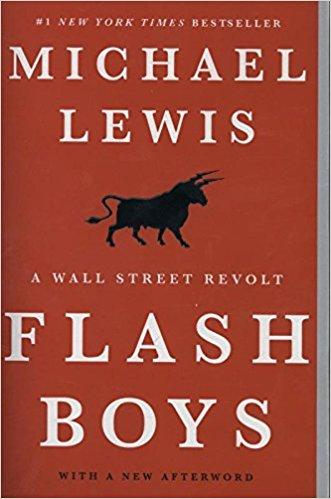Flash Boys Summary
3 min read ⌚
 A Wall Street Revolt
A Wall Street Revolt
“Flash Boys” is a story of high-frequency trading and the effects it has on the marketplace.
About Michael Lewis
 Michael Lewis is a bestselling author who has also written for The New York Times, Vanity Fair and Slate.
Michael Lewis is a bestselling author who has also written for The New York Times, Vanity Fair and Slate.
“Flash Boys PDF Summary”
Imagine you are at a flea market, trying to get a better price from the vendor for an item you like.
Just as you are about to wrap up your deal, someone shows up, snatches the item from the seller and sells it to you for a higher price.
This type of buying and selling, and pocketing the difference, happens daily on market exchanges in the form of high-frequency trading.
At the end of October 1987, the Wall Street insiders were taken aback as they witnessed the crash of the US stock market.
Nobody could explain what happened since nobody saw the situation coming.
This is where Michael Lewis’s tale starts, explaining the steam-rolling move from human traders to algorithmic trading, that followed the crash.
In “Flash Boys” he focuses on a few people he considers crucial for the events.
First, he presents Brad Katsuyama, a former executive of the Royal Bank of Canada. Brad started a quest to battle this high-frequency trading.
Next, he paints a picture of Ronan Ryan who was recruited by Katsuyama for his banking team.
Ryan explained to Katsuyama all there was to know about HFT: the rules of the game, the grip on the exchanges and the impact on the markets, after which Katsuyama decided to educate other investors in the hope of changing the system.
And finally, John Schwall, who joined Katsuyama’s team, and who saw the loophole in the regulations that high-frequency traders could exploit.
Telling the story through Kutsuyama’s eyes makes the events personalized, and simplifies the real complexity of the facts.
Some critics and bloggers question Lewis’s interpretation, although it cannot be denied that Lewis gives his subjects a full hearing.
Key Lessons from “Flash Boys”
1. Price Instability
2. Battling HFT Illiteracy
3. The Investor’s Exchange Steps to Avoid Predatory Trading
Price Instability
After the crash of 2007, Katsuyama faced a big problem: he noticed that he could no longer trade at the prices which he saw on the trading screen.
As he tried to make a transaction, the prices changed.
His team found the answer to why this was happening.
Namely, when Katsuyama pressed a button, the signal was sent to different high-frequency traders in milliseconds. Hence, they picked up the information, and they beat him to other exchanges.
These price changes made it very difficult for him to assess risk, and he started to question trading.
Battling HFT Illiteracy
Katsuyama had a hard time fighting the supporters of HFT who believed that it provides liquidity. Katsuyama, on the other hand, thought otherwise and noticed that high-frequency traders profited from buyers and sellers without assuming any risk.
The Investor’s Exchange Steps to Avoid Predatory Trading
-
- A “350-microseconds delay.”
-
- No co-location
-
- No kickbacks or rebates
-
- Limited types of orders
- Owned by investors only
Like this summary? We’d Like to invite you to download our free 12 min app, for more amazing summaries and audiobooks.
“Flash Boys Quotes”
The world clings to its old mental picture of the stock market because it’s comforting; because it’s so hard to draw a picture of what has replaced it; and because the few people able to draw it for you have no interest in doing so. Share on X Shining a light creates shadows. Share on X Dark pools were another rogue spawn of the new financial marketplace. Private stock exchanges, run by the big brokers, they were not required to reveal to the public what happened inside them. Share on X People no longer are responsible for what happens in the market, because computers make all the decisions. Share on X Every systemic market injustice arose from some loophole in a regulation created to correct some prior injustice. Share on X
Emir is the Head of Marketing at 12min. In his spare time, he loves to meditate and play soccer.


 A Wall Street Revolt
A Wall Street Revolt 



